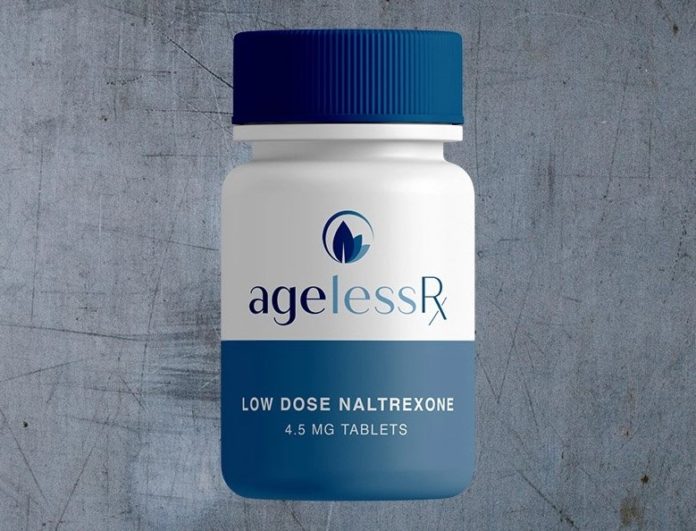At a normal dose range of 50 to 100 milligrams, naltrexone is a drug that blocks all the effects of opioids. However, some researchers have proven that the drug may benefit people suffering from several diseases at very low doses.
Low-dose naltrexone, is an inexpensive drug that is already on the market and has fueled excitement on all its potential uses. LDN may benefit people suffering from chronic fatigue symptoms, fibromyalgia, Crohn’s disease, multiple sclerosis, complex regional pain syndrome, among other immune-related syndromes.
What Is Low Dose Naltrexone?
Studies are underway to investigate the use of Low Dose Naltrexone for patients with different types of chronic pain such as migraines, neuropathy, and fibromyalgia. LDN is also under research for the treatment of some types of cancers and autoimmune disorders.
All the current studies show LDN as a cost-effective, safe, yet efficient, kind of treatment for autoimmunity and chronic pain. LDN works by reducing cytokines, pro-inflammatory chemicals in the brain. Cytokines sensitize and inflame various tissues, which may cause pain. By modulating inflammation within the nervous system, LDN can reduce pain, improve sleep, moods, physical function, and eliminate fatigue.
As opposed to the high dose naltrexone, LDN is considered investigational by the FDA. The FDA approved high dose Naltrexone to treat alcohol abuse, drug addiction, and withdrawal for many years. Various cancer studies have also shown LDN can affect immune functions by impacting gene expression.
Again, it has proven beneficial to treating the nervous system and brain disorders such as ALS, MS, and Parkinson’s. LDN is a prescription medication that isn’t addictive. Patients taking opioids, including Tramadol, should use LDN with caution. Low dose naltrexone blocks the opioid receptors throughout your body for a range of three to four hours. To avoid the drugs’ interaction, either reduce or discontinue the intake of opioid pain RX a week before beginning an LDN dosage.
What Should I Expect from LDN
LDN will not start working immediately. It could take anywhere between a couple of weeks to several months. Most patients report feeling a difference from 9 to 12 months after starting their dosage. After that initial response, LDN then continues showing benefits. The primary aim of LDN is to moderate, slow, or stop the disease from progressing.
Additionally, symptoms could improve. Improvement may decrease the exacerbation of pain, improve functioning, symptom improvement, and increase tolerance to pain. LDN may cause an increase in endorphins, morphine-like substances that your body releases, resulting in a general feeling of wellbeing.
LDN eventually leads to an improvement in mood and quality of life for users. The feeling aids in lowering depression and stress and increases the healing, especially in conditions like Complex Regional Pain Syndrome where the stress may lead to exacerbations.
Contraindications
You can take ADN together with any other medication, provided that it does not contain synthetic narcotics like fentanyl, or opiates. Since naltrexone blocks opioid receptors, expect it to block pain medications from working, leading to withdrawal symptoms.
The best option is consulting with your pharmacist and doctor to determine whether your prescription contraindicates with LDN. A doctor may also advise you on stopping pain medications and the time frame you need between stopping the opiate and beginning your LDN dosage. After consulting with your doctor, you may now get a prescription for low-dose naltrexone filled.
If you have a surgery or procedure scheduled requiring pain medications when you have already started LDN, consult with your doctor on the amount of time you need to clear the LDN from your system. You need to remove the LDN to ensure it doesn’t interfere with your pain medications or anesthesia. The time required to clear out naltrexone varies based on body weight and dosage.
Side Effects
Having side effects from LDN is quite rare. However, within the first two weeks, some people report vivid dreams within the first two weeks of treatment. Some other rare, but possible, side effects include anxiety, dizziness, and fatigue.
Side effects are more prone to patients of higher doses, often more significant than ten times the amount administered in typical LDN dosages. People with thyroiditis should approach the use of LDN with caution; they should make adjustments to their thyroid supplement early into their treatment.
Consult a Physician
Patients worldwide have used opioids for many years. It’s counter-intuitive to fathom that a drug such as naltrexone that blocks opioids effects can help manage chronic pain. However, LDN has proven beneficial to patients with chronic pain. Physicians who prescribe LDN feel that the drug is unlikely to cause any harm considering how low the dose is. Before beginning an LDN dosage, make an initial consultation with a physician to check for any contraindications and prescribe the best dosage for you.


